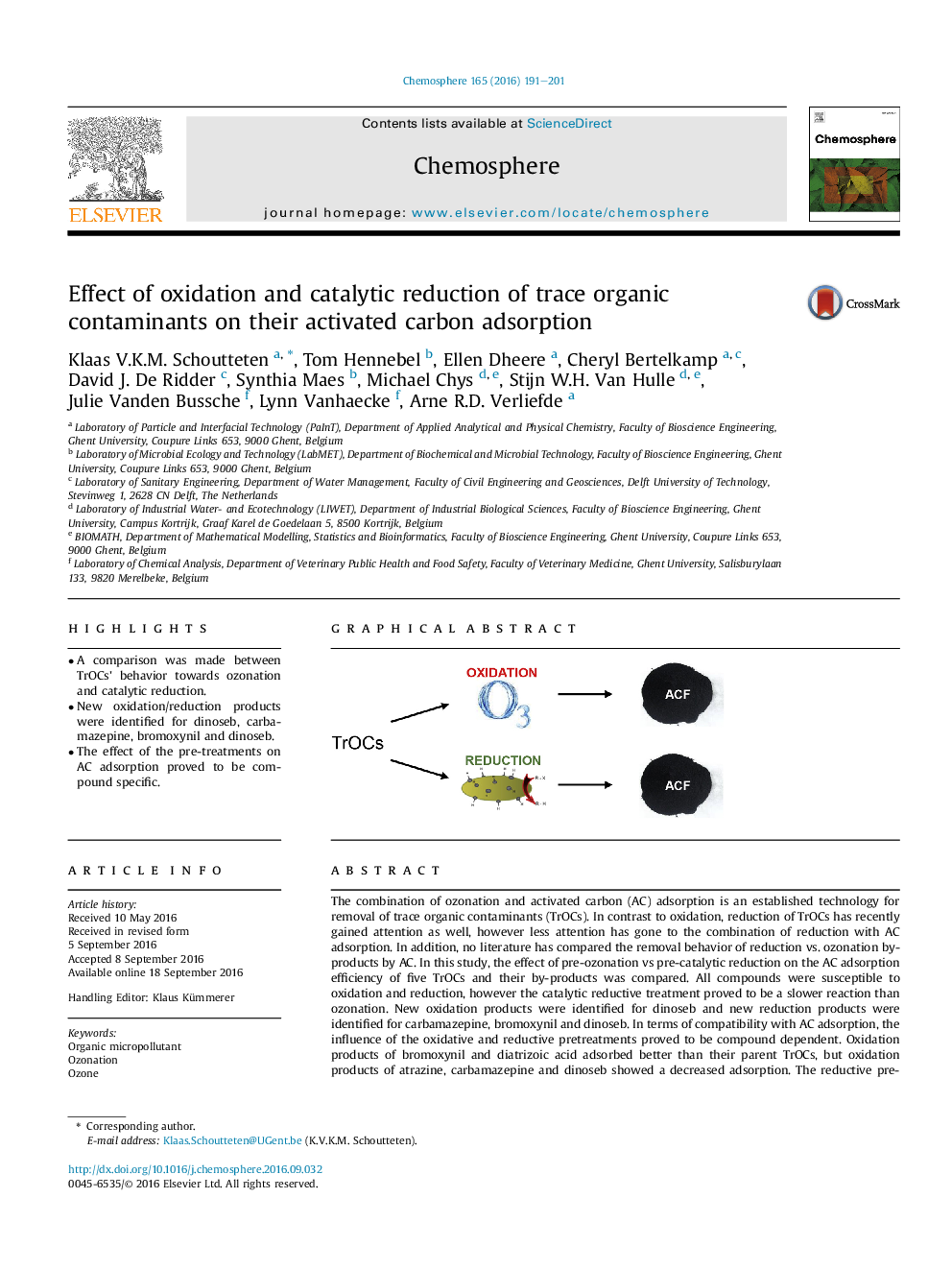| Article ID | Journal | Published Year | Pages | File Type |
|---|---|---|---|---|
| 4407293 | Chemosphere | 2016 | 11 Pages |
•A comparison was made between TrOCs' behavior towards ozonation and catalytic reduction.•New oxidation/reduction products were identified for dinoseb, carbamazepine, bromoxynil and dinoseb.•The effect of the pre-treatments on AC adsorption proved to be compound specific.
The combination of ozonation and activated carbon (AC) adsorption is an established technology for removal of trace organic contaminants (TrOCs). In contrast to oxidation, reduction of TrOCs has recently gained attention as well, however less attention has gone to the combination of reduction with AC adsorption. In addition, no literature has compared the removal behavior of reduction vs. ozonation by-products by AC. In this study, the effect of pre-ozonation vs pre-catalytic reduction on the AC adsorption efficiency of five TrOCs and their by-products was compared. All compounds were susceptible to oxidation and reduction, however the catalytic reductive treatment proved to be a slower reaction than ozonation. New oxidation products were identified for dinoseb and new reduction products were identified for carbamazepine, bromoxynil and dinoseb. In terms of compatibility with AC adsorption, the influence of the oxidative and reductive pretreatments proved to be compound dependent. Oxidation products of bromoxynil and diatrizoic acid adsorbed better than their parent TrOCs, but oxidation products of atrazine, carbamazepine and dinoseb showed a decreased adsorption. The reductive pre-treatment showed an enhanced AC adsorption for dinoseb and a major enhancement for diatrizoic acid. For atrazine and bromoxynil, no clear influence on adsorption was noted, while for carbamazepine, the reductive pretreatment resulted in a decreased AC affinity. It may thus be concluded that when targeting mixtures of TrOCs, a trade-off will undoubtedly have to be made towards overall reactivity and removal of the different constituents, since no single treatment proves to be superior to the other.
Graphical abstractFigure optionsDownload full-size imageDownload as PowerPoint slide
